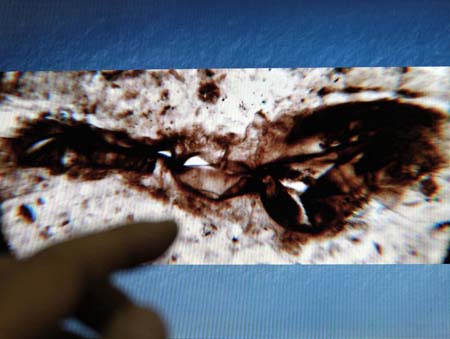New finding puts animal history 50m years earlier
(Xinhua)Updated: 2007-04-05 08:41
NANJING -- The discovery of some microfossils in central China's Hubei Province has proved that animals came into existence about 632 million years ago, about 50 million years earlier than previously thought, said an expert on Wednesday.
The phosphatized microfossils were discovered by a group of American and Chinese experts headed by Yin Leiming, researcher with the Nanjing Institute of Geology and Paleontology of the Chinese Academy of Sciences last year.
"We found diapause egg cysts in the rocks collected from Xiaofenghe in Yichang, central China's Hubei Province, which resemble those in the multi-cell embryos in Weng'an of southwest China's Guizhou Province, the oldest ever known," Yin said.
Fossil eggs and embryos in Weng'an, discovered by Chinese paleontologists in 1998, indicate that the evolution of multi-celled animals started some 580 million years ago, or in the Ediacaran (635-542 Myr ago).
"The new discovery proves that animals existed in the sea about 632 million years ago," Yin said.
|
||
|
||
|
|

